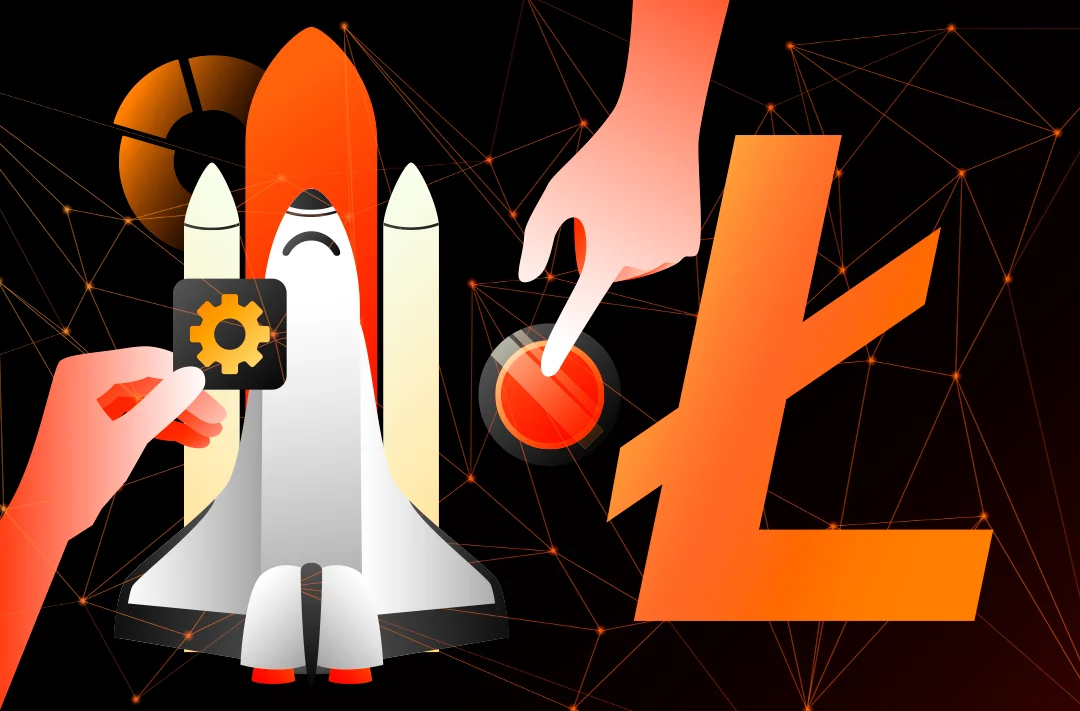NFT creating protocol Ordinals launched in the Litecoin network
The fork was carried out by independent developer Anthony Guerrera

21.02.2023 - 07:15
426
5 min
0
A small monetary bounty and an aptitude for coding were all it took to fork the Ordinals protocol to the world’s second-ever cryptocurrency network, Litecoin LTC $95.98, earlier this week, its creator told Cointelegraph.
On Feb. 18, an Australian software engineer by the name of Anthony Guerrera posted a repository to GitHub that forked the Bitcoin BTC $24,985 Ordinals protocol to Litecoin. This allowed for nonfungible token (NFT)-like assets on the Litecoin network in much the same way it had made it to Bitcoin earlier in the year.
In an interview with Cointelegraph, Guerrera said he was spurred to make a Litecoin Ordinal fork due to a 5 LTC bounty posted by the pseudonymous Twitter user Indigo Nakamoto on Feb. 11 that rose to 22 LTC, or about $2,000, to anyone who was first to successfully create a fork.
22 $LTC to port Ordinals to #Litecoin from:+ 5 $LTC @indigo_nakamoto+ 5 $LTC @ryanwrights+ 5 $LTC @MASTERBTCLTC+ 2 $LTC @ChiefLitecoin+ 5 $LTC @finitemaz https://t.co/7X4JfMzq97— Indigo | Nakamotoist (@indigo_nakamoto) February 16, 2023
“I knew it was possible because Litecoin has Taproot as well as SegWit,” Guerrera said, adding:
“I was in a bit of a mad rush to try and get it done as fast as I could.”
Taproot and SegWit are the names given to the Bitcoin protocol updates that aimed to improve the privacy and efficiency of the network but also allowed for NFT-like structures called “inscriptions” to be attached to satoshis.
The cost to inscribe an image onto the Bitcoin blockchain can cost tens of dollars depending on its size but Guerrera said the cost to inscribe a litoshi — the LTC equivalent to a satoshi — is “about two cents.”
A point of contention among Bitcoiners is the block space that Ordinals take up on the network because their data size is far greater than transactions. Guerrera doesn’t think this issue will be as prominent on Litecoin due to its larger block size but could it still possibly eventuate.
“Pandora’s Box has already been opened and someone was going to do it, so it may as well be me.”
Guerrera said his LTC fork took around one week to create as “the changes were quite simple.” He explained he updated the Ordinals code to work with inputs from the Litecoin network instead of the Bitcoin network.
Parameters that differed between the blockchains such as the total possible number of coins and block time creation differences also had to be accounted for in the fork.
In a Feb. 19 tweet, Guerrera said he’d inscribed the first ever Litecoin Ordinal, putting the MimbleWimble whitepaper onto the blockchain in the so-named “inscription 0.”
The first #Litecoin #Ordinal has been inscribed on the Litecoin blockchain.The mimblewimble whitepaper will live within Litecoin forever Ⓜ️ #MWEB!$LTC $BTC #NFT @SatoshiLite @finitemaz @ryanwrights @MASTERBTCLTC @ChiefLitecoin @indigo_nakamoto pic.twitter.com/ICLkTMjwRW— Crypto Anthony (@anthonyonchain) February 19, 2023
The inscription of the whitepaper is in the wake of the May 2022 Mimblewimble Extension Blocks (MWEB) upgrade that allows Litecoin users to opt-in to confidential transactions and other blockchain improvements such as helping reduce excess and unnecessary transaction data.
“I wanted to dedicate the first inscription to that and make it aware that Litecoin now has this privacy sidechain attached to it,” Guerrera said.
“I'm a fan of the technology and I like that privacy can become a thing on these public ledgers.”
As for the future of the forked protocol, Guerrera will “keep contributing to this fork as much as I can” and port across updates from the original Ordinals.
“I probably want to hand over this as I don't want it to take too much of my time,” he added. “I'm doing other things. I've got other things on my plate.”
This material is taken from the website cointelegraph.com.
Useful material?
Market
The platform will be non-custodial and accessible to everyone
Apr 15, 2024
Market
China Asset Management, Harvest Global Investments, and Bosera Asset Management have received permits
Apr 15, 2024
Market
The founder of the exchange announced his readiness for years of legal proceedings to prove the legality of its operation
Apr 11, 2024
Mining
According to Fred Thiel, this event has already been factored into the price as a result of the high demand for BTC ETFs in the United States
Apr 10, 2024
Crypto regulations
Native tokens for this amount will be placed in the Stride liquid staking protocol
Apr 8, 2024
Mining
In the run-up to the event, there was a noticeable increase in the blockchain hashrate
Apr 4, 2024









 Telegram
Telegram  Twitter
Twitter